Crane or Forklift? Correctly Transport and Set Up Container Structures
 Marissa Morin | Apr 8, 2020
Marissa Morin | Apr 8, 2020
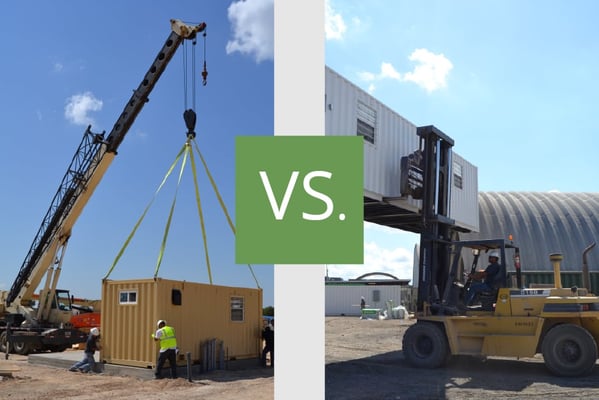
Shipping container manufacturers equip each container to work well with both cranes and forklifts. After modifying the container into storage, offices, living spaces, and everything in between, the container structures remain easily transportable thanks to their modularity. Determining how to best transport, set up, and arrange a container – using a crane or forklift – depends on a few factors.
Why Cranes and Forklifts Work Well
Every shipping container has corner castings at each of its eight corners. When placed on a ship, these corner castings provide an opening for twist locks for secure stacking. Additionally, corner castings provide connection points for cranes to lift the container. In fact, container manufacturers created corner castings specifically for cranes to easily load, stack, and unload containers on and off cargo ships. Many container terminals have dockside container cranes, also known as ship-to-shore cranes, that unload and arrange containers at ports.
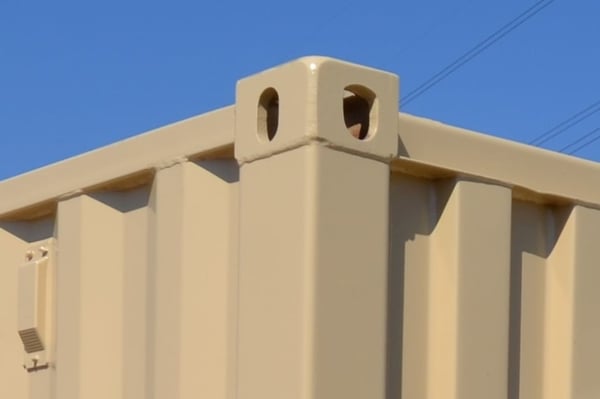
Similarly, container manufacturers include forklift pockets, located at the bottom of shipping containers, to help industrial forklifts pick up and move the units. Container forklifts are best used to move containers around a yard or port. Additionally, they help easily load shipping containers on to trucks that travel inland.
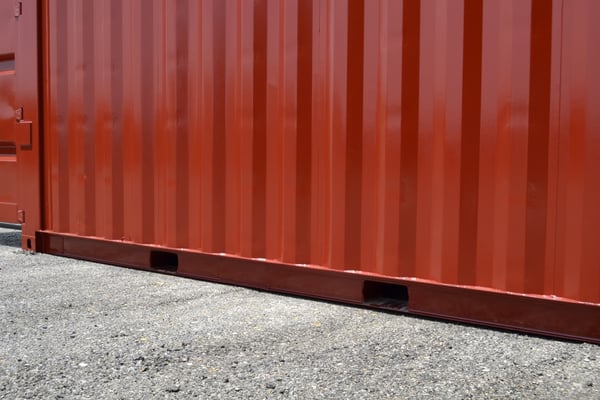
When to Choose a Forklift
Companies that frequently move containers around a yard may find that forklifts are more practical to own and manage than cranes. Additionally, forklifts work well when loading containers on and off trucks. Single unit container projects would likely benefit the most from a forklift. Although, it should be noted that handling large and heavy objects – like shipping containers – requires a special forklift.
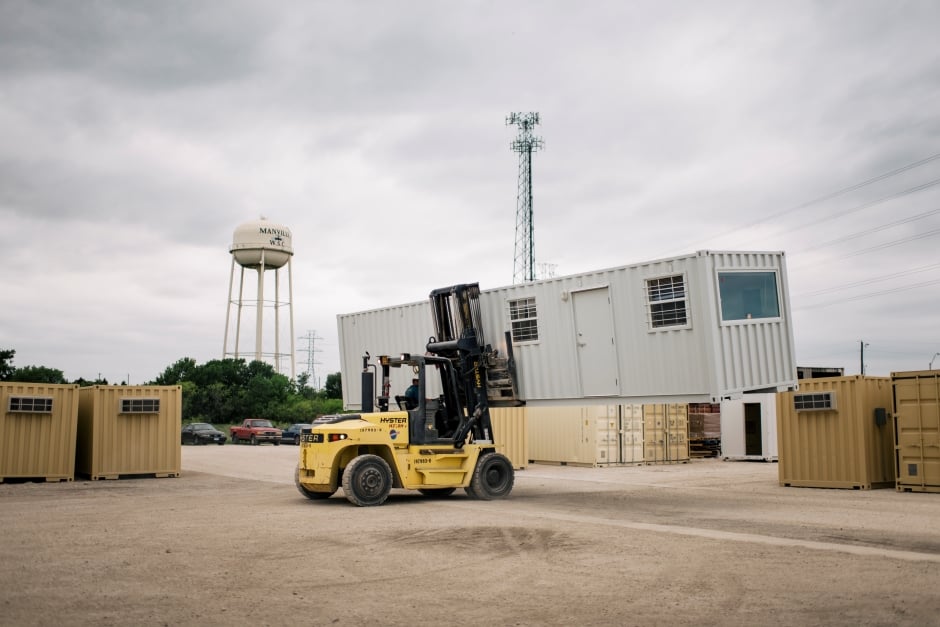
To lift a 40-foot container with interior modifications, you’ll need a forklift that lifts at least 15,000 pounds. These forklifts are not always easy to come by, in which case a crane should be utilized instead. Standard warehouse forklifts should never lift a shipping container. It’s dangerous and may cause damage to the container structure and forklift.
When to Choose a Crane
As more companies choose to repurpose shipping containers into multi-unit structures or building material, cranes remain helpful and necessary. For example, when constructing a multi-container building, cranes easily pick up and stack containers just like other building elements. It’s also faster to place containers with a crane, which not only saves time, but allows companies to save on labor because of the shortened timeline.
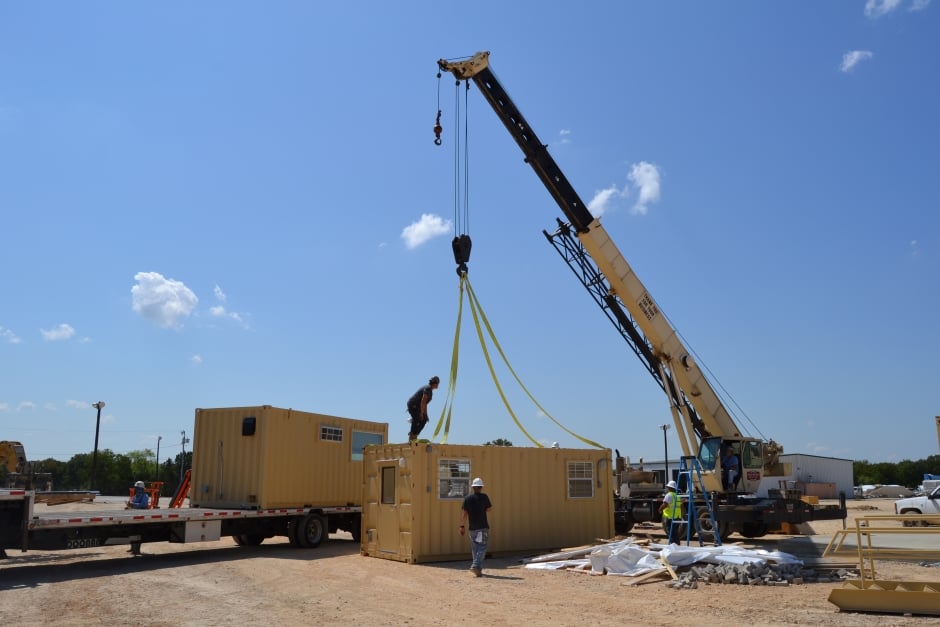
Additionally, cranes allow placement in even the most difficult locations. They can drop containers into small, urban plots or even in remote and rural job sites. Cranes allow precise placement when experienced operators sit behind the controls. A downside to cranes is that they tend to be more expensive to rent than forklifts and may not be practical for all companies to keep on site.
Keep in mind that whether you choose to work with a crane or a forklift, personnel are required to help guide the container and steer it into position. For cranes, placing a container typically requires an operator, a boom guide, and at least 1-2 other people on the ground. If you’re using a forklift, placing a container requires a driver and at least 2-3 people on the ground to direct the driver.
How Modifications Change Shipping Container Transportation
After Falcon repurposes shipping containers into storage units, mobile offices, equipment enclosures, and more, we ship them to companies across the country. Because our modifications transform cargo boxes into livable and workable structures, they require more careful transportation measures. Although the container structures are still very durable, they should be transported with more care than a box full of cargo because they may now include windows, interior insulation, or other damageable modifications.
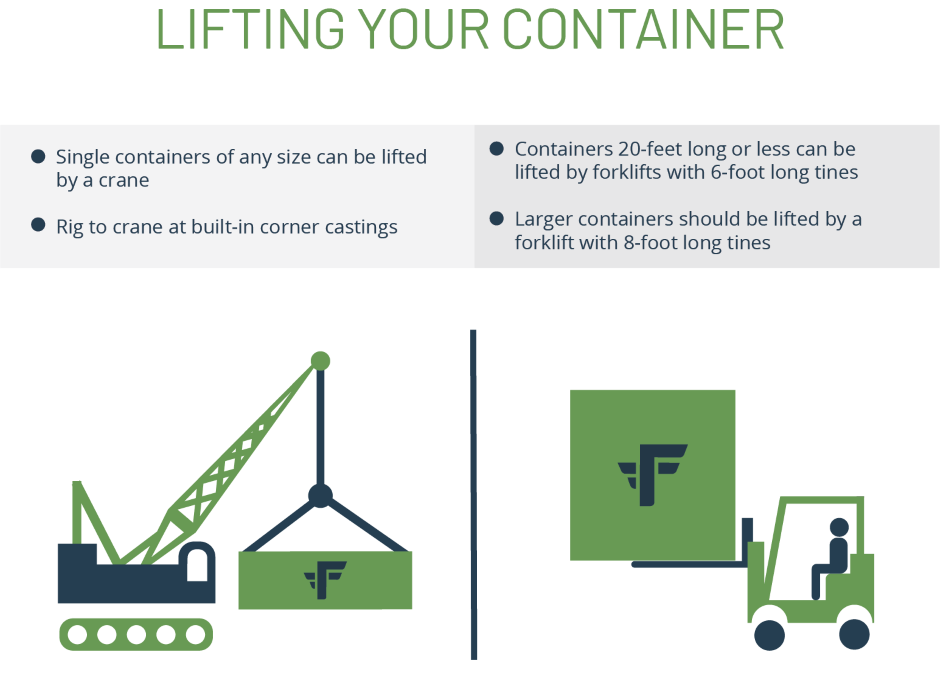
All modifications make container structures heavier. Due to this additional weight, forklifts may not always work as well as cranes. Furthermore, some modifications may require insulation below the floor of the shipping container, making forklift pockets inaccessible. Lifting the container from the bottom may work for some container structures, but not all. Use a crane when the container is too heavy for a forklift and when you can’t lift it from underneath.
As you plan for the delivery and set up of your shipping container, keep the size, weight, and modifications of your structure in mind. If you’ll be setting up a larger, heavier, multi-unit structure, make sure you acquire a crane and a crane operator. If you only plan to unload a smaller, lighter structure off a truck bed, a forklift may be the more suitable choice. Either way, we will gladly advise you.
If you have questions about lifting and placing a shipping container structure, or if you’d like to discuss a container project with an expert, reach out to us. Give us a call at 512-231-1010 or email us at Sales@FalconStructures.com. Let us know how we can help.
SUBSCRIBE
- Shipping Container Modifications
- How-Tos
- Workspace
- Commercial Construction
- Multi-Container Buildings
- Storage Solutions
- Industrial Enclosures
- Bathrooms & Locker Rooms
- Oil & Gas
- Climate Control
- Green Building
- Living Space
- Industry Insight
- Military & Training Facilities
- Water Treatment Solutions
- Energy
THINK INSIDE THE BOX®
WITH OUR BLOG
Get everything from shipping container basics, to detailed how-tos and industry news in our weekly blog. Stay inspired and subscribe!
RELATED BLOGS
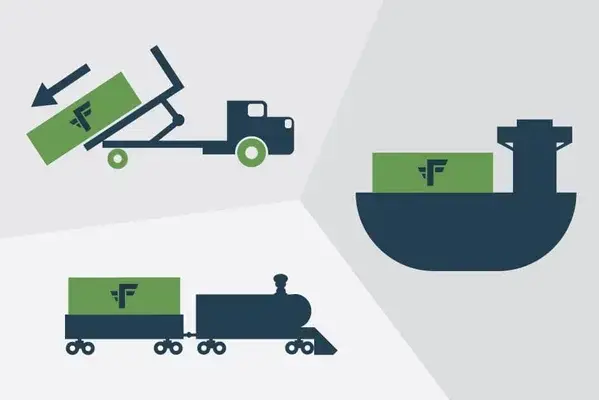
How To Move a Shipping Container
Marissa Morin | Aug 18, 2021 | 4 min read
READ MORE
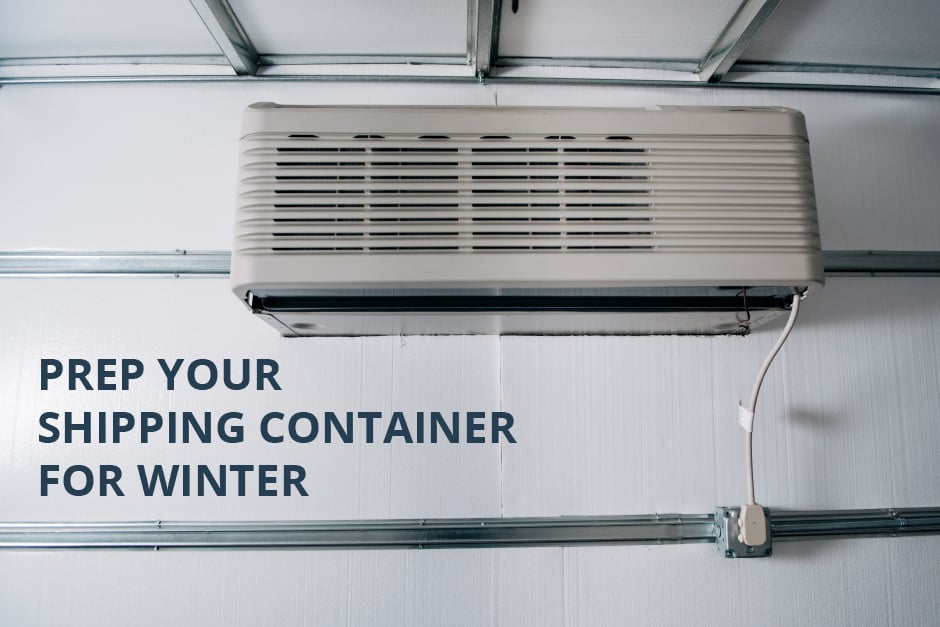
7 Shipping Container Maintenance Steps to Help You Prep for Winter
Marissa Morin | Jan 6, 2021 | 2 min read
READ MORE
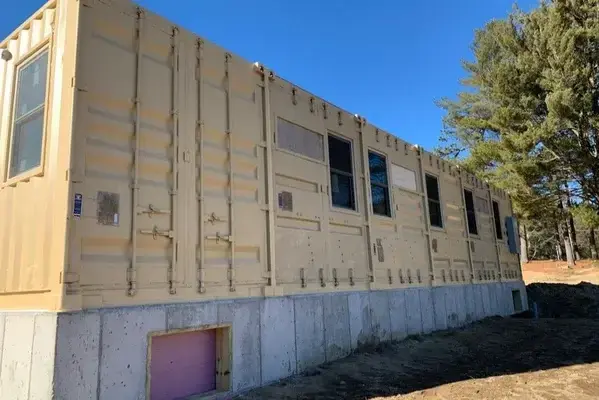
Do Shipping Containers Need Foundations? It Depends.
Marissa Morin | Nov 23, 2022 | 3 min read
READ MORE
